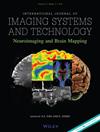A Generative Adversarial Network (GAN) is a machine learning model used to generate new examples that are like real data. In segmentation, it can be used to improve the generation of segmented images that get closer to ground truth ones. In a super-resolution context, the GAN solves the problem of low-resolution images as it allows increasing the resolution of images while preserving the original details. In this paper, we leverage these advantages of GANs to provide a new methodology with a pipeline of two novel GANs for accurate segmentation. The proposed pipeline is composed of a first GAN model that segments the images and a second model that applies super-resolution as post-processing on the segmented images to improve its quality. The two novel GAN architectures integrate the nested residual connections (NRCs) to improve the extraction and traffic of features. These architectures are validated on CT lung datasets to detect the infected regions for COVID-19. The experimental results prove that the suggested models with NRC implementation outperform state-of-the-art solutions in multiple metrics. It achieves a dice score of 0.77 for the segmentation of COVID-19 images using the first GAN. After applying super-resolution to the segmented images using the second GAN, the PSNR and MS-SSIM metrics increase from 19.69 and 0.8756 to 33.24 and 0.9682, respectively.


